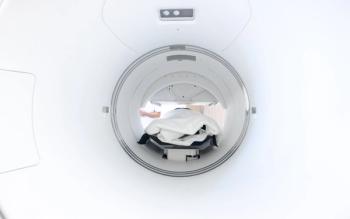
Prostate Cancer
Latest News
Latest Videos

CME Content
More News

A recent study suggests that patients with high-risk prostate cancer (PCa) in need of renal transplantation should receive cancer treatment before their transplants, as surgery and radiation treatment for localized PCa appear to be equally effective in this patient population.

Researchers found that analyzing certain chemokine levels may help explain racial disparities in prostate cancer lethality, and that neutralizing such chemokines could potentially benefit prostate cancer treatment.

Combination treatment with cabozantinib and atezolizumab did not produce any new safety signals in the treatment of those with metastatic castration-resistant prostate cancer in the phase 3 CONTACT-02 trial.

Panelists from the American College of Surgeons (ACS) and the American Urological Association spread awareness about the realities of prostate cancer, the importance of screening, and ways for men to approach their health concerns and prevention.

A meta-analysis found that the use of magnetic resonance–guided daily adaptive stereotactic body radiotherapy (SBRT) correlated with fewer acute grade 2 or higher gastrointestinal (GI) or genitourinary (GU) toxicities compared with CT-guided non-adaptive SBRT in patients with prostate cancer.

In an exploratory analysis, Hispanic men with primary and metastatic prostate cancer exhibited higher frequencies of certain altered genes compared to non-Hispanic men.

Measuring biochemical recurrence (BCR) as a surrogate marker produces unreliable results as a primary end point for overall survival of patients with localized prostate cancer, a study found.

MRI screening shows promise for predicting clinically significant prostate cancer (PCa) early on and independently of prostate-specific antigen (PSA) assessment.

The FDA companion diagnostic designation for FoundationOne CDx may improve access to niraparib/abiraterone acetate for eligible patients with metastatic castration-resistant prostate cancer (mCRPC) harboring a BRCA mutation.

Researchers determined that the Huber et al. criteria regarding prostate-specific antigen (PSA) levels may more accurately predict the need for additional treatment or the possibility of treatment failure compared with other PSA-based definitions.

Data from 2 studies, LIGHTHOUSE and SPOTLIGHT, have shown the benefit of flotufolastat F 18 injection as a radiohybrid PSMA-targeted PET imaging agent in prostate cancer. The agent has now been added to the National Comprehensive Cancer Network (NCCN) Clinical Practice Guidelines in Oncology.

New biomarker technology shows promising results for predicting the prognosis of patients with prostate cancer after radical prostatectomy.

Investigators of a retrospective study report that an AI deep learning model may also predict negative margin probabilities better than conventional modalities.

A recent study suggests that a lack of equitable access to care contributes to known disparities in outcomes between Black and White patients with advanced prostate cancer.

Researchers linking uric acid (UA) levels to the aggressiveness and progression of prostate cancer believe these findings can be used to study UA influence on prostate cancer–related mortality risk.

Following prostatectomy in patients with recurrent prostate cancer, researchers analyzed post–salvage radiotherapy prostate-specific antigen (PSA) values and the percentages of PSA decline to anticipate patient survival rates.

Forms of localized treatment have potential to positively impact the survival rate and prognosis of men diagnosed with certain forms of metastatic prostate cancer.

Most prostate cancer survivors surveyed reported feeling that telehealth cannot fully replace in-person visits, with perceptions varying significantly based on education level.

Enhanced antitumor activity was seen with the addition of the PARP inhibitor olaparib to the radioligand lutetium Lu 177 vipivotide tetraxetan in patients with metastatic castration-resistant prostate cancer.

Patients with metastatic prostate cancer who face high financial toxicity resulting from treatment may cope in ways that impact overall quality of life, according to a recent study.

A predictive artificial intelligence (AI) biomarker of androgen deprivation therapy (ADT) benefit in prostate cancer was validated in a recent study published in NEJM Evidence.

The study aimed to assess whether CRF was associated with prostate, colon, and lung cancer incidence and mortality among men in Sweden.

Talazoparib in combination with enzalutamide showed a 55% reduction in the risk of disease progression or death for patients with metastatic castration-resistant prostate cancer (mCRPC) with homologous recombination repair (HRR) gene mutations in the phase 3 TALAPRO-2 trial.

There was no difference in second primary cancer risk among older adult male patients treated with intensity-modulated radiotherapy (IMRT) vs 3-dimensional conformal radiation therapy for prostate cancer.

An analysis of patients with metastatic castration-resistant prostate cancer (mCRPC) and homologous recombination repair (HRR) deficiency mutations showed that patients with BRCA mutations had poor outcomes compared with those without BRCA mutations and those with non-BRCA HRR mutations.






















































